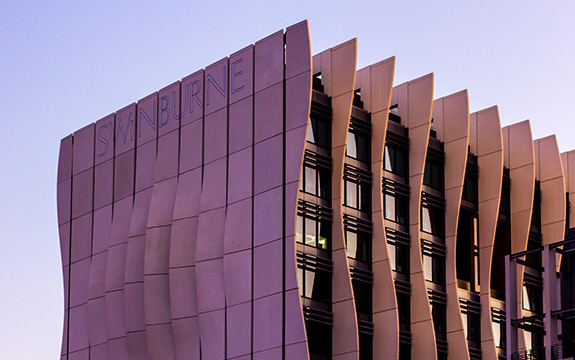Catching the renewable energy wave

In Summary
Swinburne University of Technology and the University of Tasmania are investigating the interactions of model wave-power devices in an effort to develop the potential of wave energy.
The at Swinburne and the Australian Maritime College (AMC) at the University of Tasmania will explore the best ways of arranging wave arrays or farms, supported by $770,000 funding from the Australian Renewable Energy Agency (ARENA).
Unlike wind energy, there is no single established concept for generating electricity from ocean waves.
“Because the inherent motion of wind is in one dominant direction, a wind turbine requires only a single moving part to extract power from fluid air,” Associate Professor Richard Manasseh said.
“However, the to-and-fro nature of waves in which the speed of the water is never steady and constantly reverses demands a more complex mechanism.”
The research project will combine mathematical modeling with laboratory experiments at the AMC’s wave-basin facility in Launceston to predict the performance of small arrays of wave energy converters (WECs).
These machines tap the ocean swell, a source of renewable energy largely unaffected by the local weather, and hence of great potential value to future electricity markets.
Until now, almost all designs have assumed WECs behave as individuals. However, unlike wind turbines, WECs are coupled via sea-surface waves and so can bounce energy between each other. In some cases they are deliberately coupled underwater.
“Thus, an array of WECs could act together as one collective machine, with behaviour significantly different to an individual machine,” Associate Professor Manasseh said.
The research will be used to create a software tool for gathering site-specific information and may also be used to obtain regulatory and planning approvals. It has the potential to be used around the world by wave energy technology developers to identify the best designs for ocean wave energy devices at selected sites.
"The outcome may also assist Australian wave power technology developers to compete in the rapidly-developing market overseas for these technologies, by giving them the ability to predict how large numbers of their machines would work together,” Associate Professor Manasseh said.
Swinburne’s COEST has an established track record of research. In the Australian Research Council’s 2012 Excellence in Research for Australia (ERA) evaluation, Swinburne was the only university in Australia to achieve an ERA 5 rating – well above world standard –for maritime engineering, through the work of the COEST.

